Posts Tagged: pumpkins
Happy (Bee, Butterfly, Dragonfly) Halloween!
The Bohart Museum of Entomology at the University of California, Davis, won't be the site of a Halloween party this year due to the COVID-19...
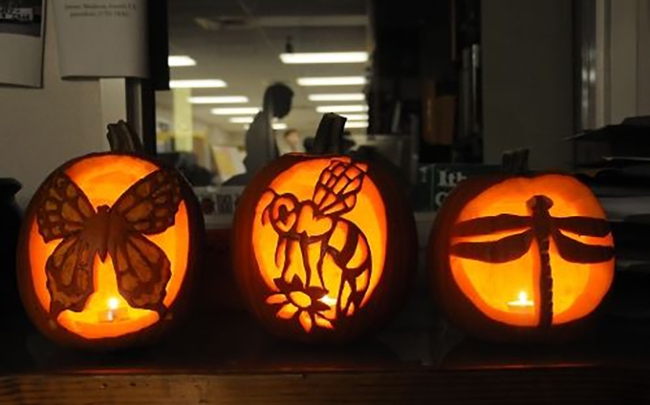
These three jack o'lanterns represent a butterfly, bee and dragonfly. They were among Halloween decorations at the Bohart Museum of Entomology's annual Halloween parties. (Photo by Kathy Keatley Garvey)
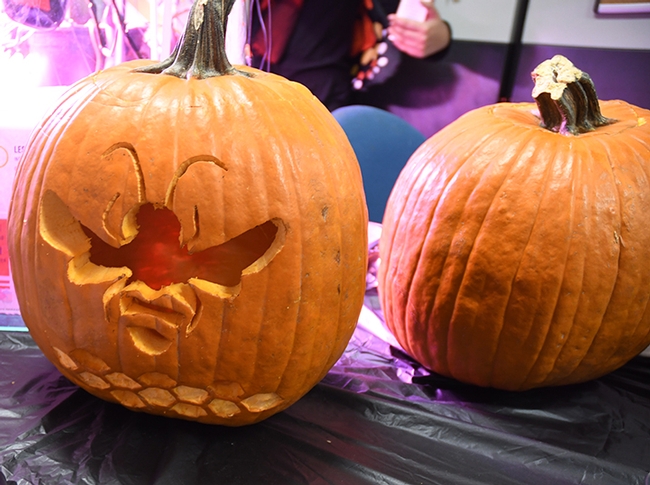
This carved pumpkin celebrates the order Hymenoptera (an order that includes bees, wasps and sawflies). Doctoral student Charlotte Alberts carved this one of a bee and honeycomb. (Photo by Kathy Keatley Garvey)
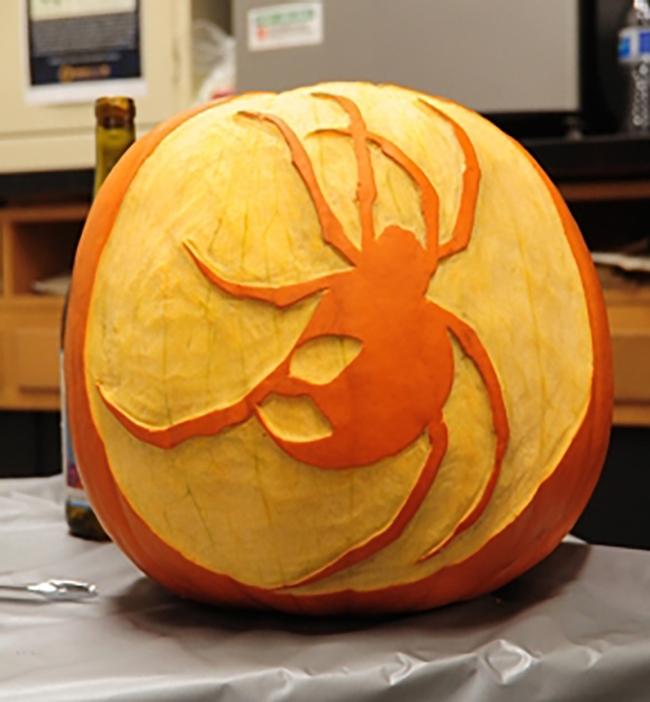
A spider graces this Bohart Museum of Entomology pumpkin. (Photo by Kathy Keatley Garvey)
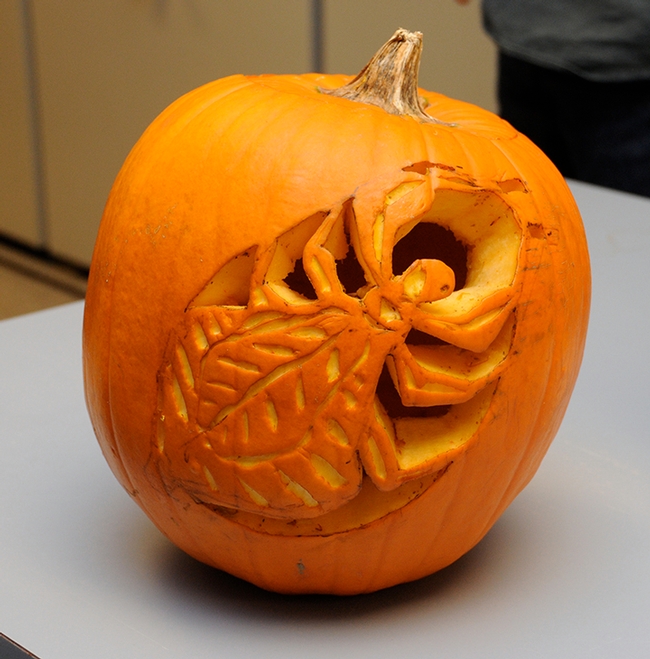
What, you've never seen a pumpkin with a bedbug theme? This is one of the pumpkins featured at a previous Halloween party at the Bohart Museum of Entomology. (Photo by Kathy Keatley Garvey)
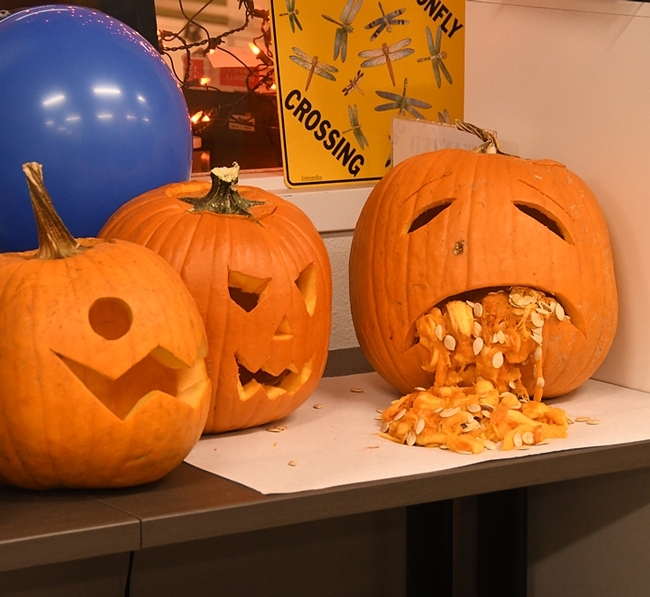
Not all pumpkins at the previous Bohart Museum Halloween parties focused on insects. (Photo by Kathy Keatley Garvey)
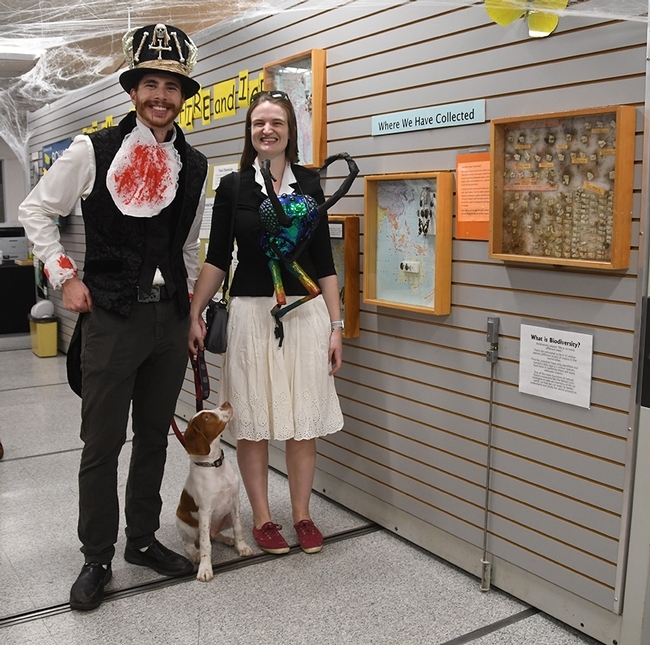
UC Davis entomology doctoral student Charlotte Herbert Alberts and husband George are a big part of the Bohart Museum Halloween parties. Both are artists as well. Charlotte studies with major professor Lynn Kimsey, director of the Bohart Museum of Entomology. With the couple: their Brittany spaniel, Westley. (Photo by Kathy Keatley Garvey)

Griffin, infant son of George and Charlotte Alberts, wasn't born in time for the 2019 Bohart Museum of Entomology Halloween party, but he's not missing out this year in family celebrations. He was born in April 2020. (Photo courtesy of George and Charlotte Alberts)
Free Webinars: Think of the ABCs in Pollination of Specialty Crops
Think of the ABCs: almonds, blueberries and cherries. Then think of watermelons and pumpkins. All those crops will be discussed in a series of free...
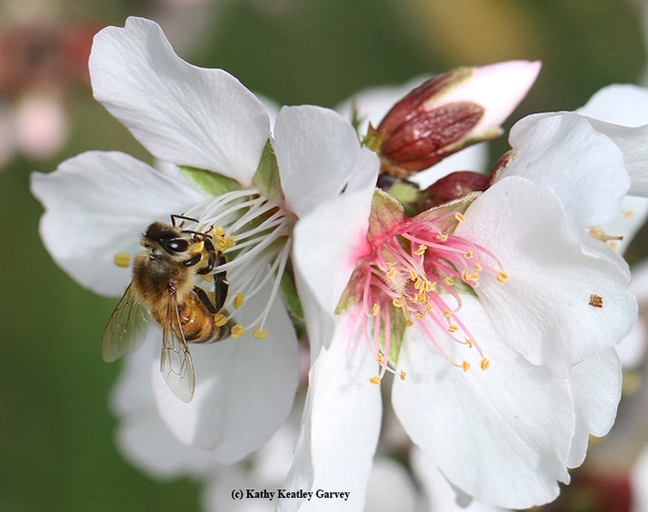
"A" is for almonds. A honey bee pollinating an almond blossom. (Photo by Kathy Keatley Garvey)
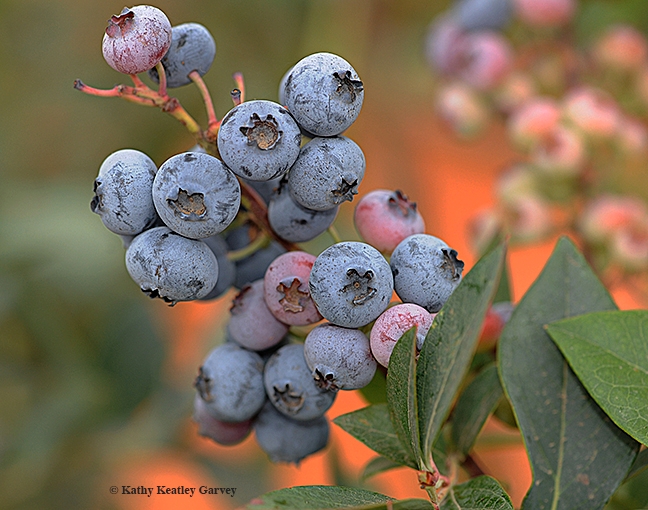
"B" is for blueberries. This is the result of bee pollination. (Photo by Kathy Keatley Garvey)
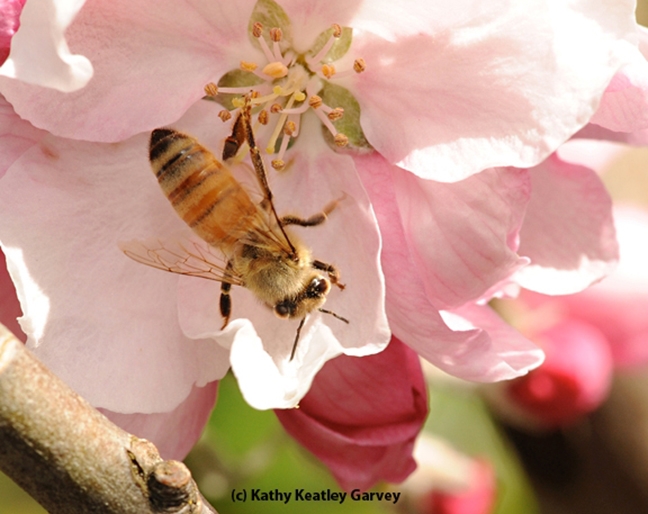
"C" is for cherries. A honey bee pollinating a cherry blossom.(Photo by Kathy Keatley Garvey)
Master Gardeners at the Erickson Ranch
The Master Gardeners have had a presence at the Erickson Ranch and Dahlia Farm for many years. We have gone to “the Ranch” as many as 3 to 5 times each growing season. We provide a support table with pest notes, compost information, copies of ‘Seeds for Thought’, and info related to the theme of the event.
During the August event, the focus was on tomatoes, so we provided handouts about growing tomatoes, the vegetable planting guide by Dr. Robert Norris, and a page of the assorted tomato diseases and pests with photos. We had many clients with questions about their gardens and heard their stories about tomato successes and tomato failures. We answered questions and made suggestions for next year.
In September at the “all About Peppers” event, we provided the same support table but added info on planting peppers. We listened as people asked us how to get rid of white flies, tomato horn worms, and mildew on their plants.
Saturday was the last event for 2013 and the focus was on pumpkins. There were pumpkins to purchase, pumpkins to carve, and wagon rides out to the pumpkin patch. The Master Gardeners had the support table full of the usual information and added Halloween masks for the kids and instructions on how to build your own scarecrow. The families came in groups including grandparents, parents with babies in strollers and young children. The Erickson’s had their produce, flowers and jams for sale. The Charlie Wade Blues Band entertained the crowds. Nick, the BBQ man was cooking across the blacktop from Angelina’s biscotti table. Lucas was selling home grown plants while Cindy was making crafts with kids (headbands with fresh flowers being a favorite). Suisun Wildlife Rescue Center had an assortment of birds and reptiles on display. Under a white tent, children were carving pumpkins letting their creative juices flow. It was an entertainment extravaganza. And the best part of all was the six MG’s who volunteered in two shifts and were able to educate the crowds and enjoy the day! A real win-win!

Erickson Ranch entry. (photos by Sharon Rico)

Pumpkins.

Carving up pumpkins.
Old Man Squash
Every year I look forward to choosing my fall display of winter squash to both enjoy as art as well as blend up in a hearty curry soup. As a fanciful display, I pile the squash and gourds up near my front door as a cheerful welcome home for my family and friends. The other day my first beauty arrived. It is peculiar, a grayish blue with deep vertical grooves surrounding the body. My neighbor calls it "Old Man Squash", it is so cute. I doubt that it will ever end up in a soup. In the last few years, I have noticed that even our local grocery stores are carrying an extensive collection of these beauties, far beyond the usual "Jack 'O Lantern" pumpkins. I am anxious to check out the roadside stands throughout our county to see what colorful gems they have grown this season.
If you get energetic next spring you might want to check out some of the seed sources now for an extensive variety of squash seeds to choose from. I found the following sources have quite a few of the more unusual varieties out there: www.botanicalinterests.com, sustainableseedco.com, www.seedsavers.org, nativeseeds.org, victoryseeds.com and rareseeds.com (Baker Creek Heirloom Seed Company).
Reading through some of the squash descriptions reminded me of the legendary companion planting "Three Sisters", corn, pole beans and squash (or pumpkin). Each sister contributes to the group. The corn offer support to the pole beans, the beans fix nitrogen from the air and bring it into the soil for the benefit of all three, the bean vines wrap around and hold them together and the squash leaves provide cooling shade for the soil and prevent weeds from intruding. By the time European settlers arrived on the east coast, the Iroquois had been following this planting practice for over three centuries. In legend these plants were seen as a gift from the gods, always to be grown together, eaten together and celebrated together.

The wrinkly old man squash. (photo by Trisha Rose)
Growing pumpkins is like a beauty pageant
Commercial pumpkin production poses many of the same challenges as growing other gourds and squash plants, like cucumbers, luffas, zucchini and watermelons, wrote Reid Fujii in the Stockton Record.
Growers must watch out for overwatering, plant diseases, and pests like squash bugs and cucumber beetles, said Brenna Aegerter, UC Cooperative Extension advisor in San Joaquin County.
"Like one of the growers here told me, it's a beauty pageant," Aegerter said. "It's all about how they look; it's not how they taste."
While other states produce more pumpkins than California, particularly those grown for canning and pumpkin pies, the Golden State harvests the largest volume for the retail, fresh market, Aegerter said.

San Joaquin County leads the state in pumpkin production.

